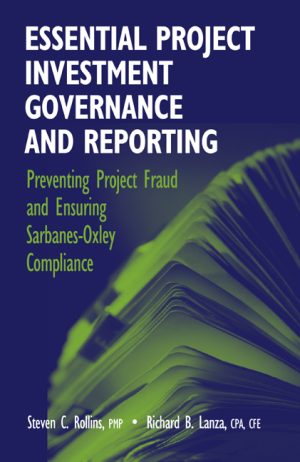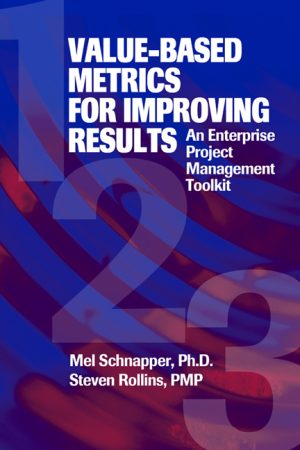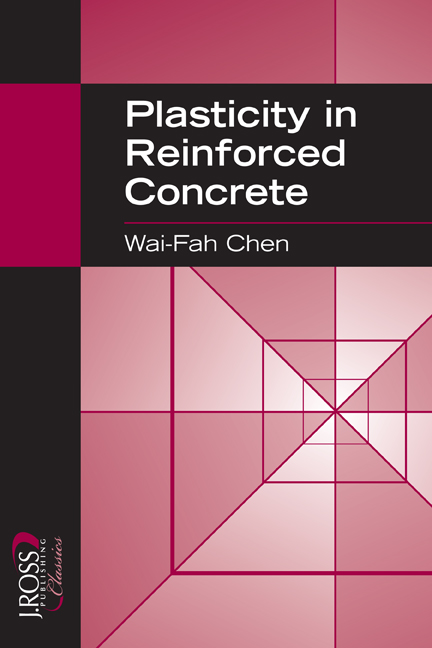Plasticity in Reinforced Concrete
$49.95
By Wai-Fah Chen
Softcover, 6×9, 474 pages
ISBN: 978-1-932159-74-5
January 2007
Description
An indispensable reference that presents a unified treatment of mathematical models of concrete structural analysis. In Part I, the author considers the experimental data regarding stress and strain characteristics of concrete under biaxial and multiaxial stress states and presents empirical equations for modulus and fracture strength. Part II discusses concrete elasticity, generalized failure, and fracture criteria, while the final part addresses concrete plasticity with applications of limit analysis and finite element analysis to concrete and reinforced structures.
An unabridged J. Ross Publishing republication of the edition published by McGraw-Hill, Inc., New York, 1982, 474pp.
About J. Ross Publishing Classics
J. Ross Publishing Classics are world-renowned texts and monographs written by preeminent scholars. These books have been widely read, discussed, and cited in the literature since their inaugural publications but unavailable for some time to students, researchers, professionals, and libraries. J. Ross Publishing is proudly making these valuable references and texts available once again.
Key Features
- Offers a comprehensive review of the advantages and limitations of constitutive equations and failure criteria with suggestions for improvements and refinements
- Test results of the mechanical properties of concrete are provided and summaries of the generally accepted experimental results in the field
- Worked examples, chapter summaries, a glossary, chapter references, and a bibliography of finite element applications are included
About the author(s)
Dr. Wai-Fah Chen was Professor and Dean of the College of Engineering at the University of Hawaii from 1999 to 2006. From 1976 to 1999, he was Head of the Department of Structural Engineering at Purdue University and George E. Goodwin Distinguished Professor of Civil Engineering; prior to that he taught at Lehigh University. The author of more than 300 peer-reviewed publications and author or co-author of 20 books, his primary areas of research are constitutive modeling of engineering materials, soil and concrete plasticity, structural connections, and structural stability. He received his Ph.D. from Brown University. He is a member of the U.S. National Academy of Engineering and an Honorary member of the American Society of Civil Engineers.
Table of Contents
Preface
Notation
Part 1 — Basic Concepts and Experiments
Chapter 1 — Introduction
Chapter 2 — Some Basic Properties of Concrete and Steel
Part 2 — Concrete Elasticity and Failure Criteria
Chapter 3 — Linear-Elastic Brittle-Fracture Models
Chapter 4 — Nonlinear-Elastic Fracture Models
Chapter 5 — Failure Criteria of Concrete
Part 3 — Concrete Plasticity: Theory and Application
Chapter 6 — Elastic Perfectly Plastic Fracture Models
Chapter 7 — Limit Analysis of Perfect Plasticity
Chapter 8 — Elastic-Hardening Plastic-Fracture Models
Chapter 9 — Numerical Implementation of Elastoplastic Fracture Models
Author Index
Subject Index
Related products
-

The EDGAR Online Guide to Decoding Financial Statements
Retail Price: $34.95$29.95 Add to cart -

Essential Project Investment Governance and Reporting
Retail Price: $59.95$49.95 Add to cart -

Value-Based Metrics for Improving Results
Retail Price: $54.95$49.95 Add to cart -

Managing Business Analysis Services
Retail Price: $54.95$44.95 Add to cart -

Financially Focused Project Management
Retail Price: $54.95$44.95 Add to cart

